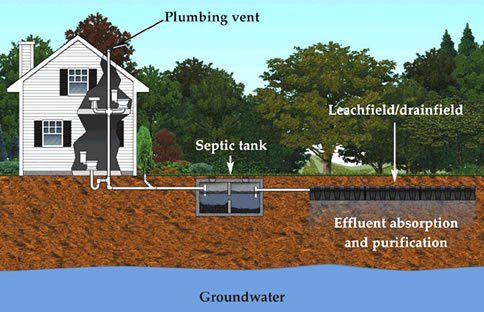Septic Tank Cleaning Professionals
When a septic system
works properly, new wastewater from the house pushes the separated wastewater in the septic tank out into the leachfield, which provides additional treatment by allowing the wastewater to trickle through a filtering system composed of perforated pipes or chambers, gravel and soil. Bacteria in the soil also helps to break down the waste.
One problem can occur if the household uses so much water in a short time that wastewater is pushed out into the leachfield before solids have had a chance to settle out. Solids damage the leachfield pipes or chambers and can strain the system unnecessarily. So homeowners should stagger their laundry throughout the week and try to do no more than two wash loads per day.
24 HR Emergency Response Available!
If you find yourself in the middle of an unexpected situation with your septic tank, give us a call right away. We are available 24 hours a day to assist in your time of need. We take pride in being the team you can count on.
Checklist for your Septic System:
Do
learn the location of your septic tank and leachfield.
Do
have your septic system inspected annually.
Do
have your septic tank pumped out by a licensed
contractor, approximately every 3 to 5 years, or as often as is appropriate for your system.
Do
keep your septic tank cover accessible for inspections
and pumping. Install risers if necessary.
Do
call a professional when you experience problems with your system or if there are any signs of failure.
Do
keep a detailed record of repairs, pumping, inspections, permits issued, and other maintenance activities.
Do
conserve water to avoid overloading the system
Don’t
go down into a septic tank. Toxic gases are
produced by the natural treatment processes in septic tanks and can kill in minutes.
Don’t
allow anyone to drive or park over any part of the system.
Don’t
plant anything over or near the leachfield except grass that doesn’t require irrigation. Roots from nearby trees or shrubs may clog and damage the drain lines.
Don’t
dig in your leachfield or build anything over it, and don’t cover the leachfield with a hard surface such as concrete or asphalt.
Don’t
use your toilet as a trash can or poison your septic system and the groundwater by pouring harmful chemicals and cleansers down the drain.
Don’t allow livestock over the leachfield.







